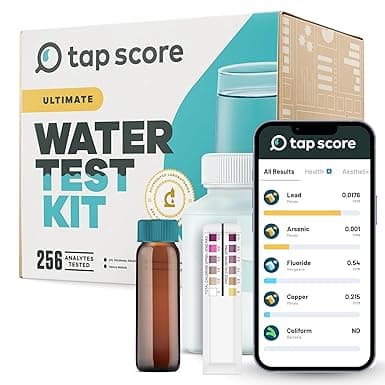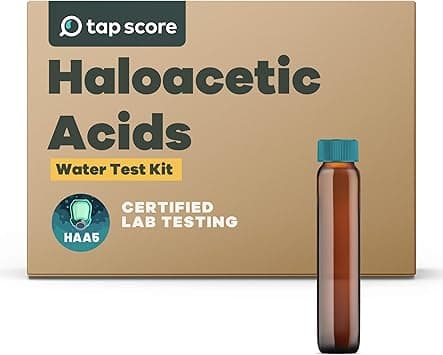Brewster Tap Water Quality Report
Brewster's water has 12 contaminants above EPA MCLGs. We recommend using a certified water filter.
Utility
BREWSTER WATER SYSTEM
People Served
2,000
MCL Violations
0
Last Updated
Is Brewster Tap Water Safe to Drink?
Brewster's water has 12 contaminants above EPA health-based guidelines. We strongly recommend using a certified water filter to reduce exposure to these contaminants. Check our filter recommendations below for NSF-certified options that can remove the specific contaminants found in Brewster's water.
The data below shows test results from BREWSTER WATER SYSTEM, which serves 2,000 people in the Brewster area. Water quality testing is conducted regularly and reported to the EPA. This report was last updated Nov 24, 2024.
Brewster Water Quality Test Results
Key Water Quality Metrics
Contaminants Detected
⚠️ Contaminants Above EPA MCLG (12)
Arsenic
What is Arsenic?
Naturally occurring element that has both inorganic and organic forms
Health Effects
The EPA drinking water standards for arsenic are based on adverse effects to the cardiovascular, pulmonary and liver systems in drinking water with inorganic arsenic, as well as an increased risk of cancer. Long term health effects of total arsenic in drinking water include bladder, GI tract, kidney, liver, lung, pancreas and skin cancer, cardiovascular effects, pulmonary and gastrointestinal effects, ocular, immunological, neurological and reproductive effects. Arsenic found in epidemiological studies include developmental effects, socioeconomic and genotoxicity.
Affected Organs
Common Sources
Bromodichloromethane
What is Bromodichloromethane?
Member of trihalomethanes (THMs) that form in water treated with chlorine
Health Effects
Health protective benchmarks for BDCM are based on carcinogenicity and liver toxicity observed in animal studies. The EPA has classified BDCM as a probable human carcinogen. Results from animal studies also suggest that kidney, immune system, spleen, and developmental toxicity are associated with exposure to BDCM. BDCM has been shown to produce DNA changes (genotoxicity) in laboratory studies.
Affected Organs
Common Sources
Bromoform
What is Bromoform?
Member of trihalomethanes (THMs) that form in water treated with chlorine
Health Effects
Health protective benchmarks for bromoform are based on liver, developmental, and carcinogenicity observed in animal studies. Results from animal studies also suggest that exposure to bromoform can also lead to liver, kidney, and developmental toxicity. Bromoform has also been shown to produce DNA changes (genotoxicity) in laboratory studies.
Affected Organs
Common Sources
Dichloroacetic Acid (DCA)
What is Dichloroacetic Acid (DCA)?
Member of haloacetic acids (HAAs) that form as byproducts when chlorine reacts with organic matter
Health Effects
Health protective benchmarks for DCA are based on evidence of increased cancer risk and liver toxicity observed in animal studies. Adverse effects to the male reproductive system have also been associated with elevated levels of DCA in animal studies. The EPA classifies DCA as a likely human carcinogen.
Affected Organs
Common Sources
Trichloroacetic Acid (TCA)
What is Trichloroacetic Acid (TCA)?
Member of haloacetic acids (HAAs) that form as byproducts when chlorine reacts with organic matter
Health Effects
Health protective benchmarks for TCA in drinking water have been developed based on liver toxicity and carcinogenicity observed in animal studies. EPA has classified TCA as a possible human carcinogen. Developmental toxicity has also been associated with exposure to TCA based on evidence from animal studies.
Affected Organs
Common Sources
Dibromoacetic Acid (DBA)
What is Dibromoacetic Acid (DBA)?
Member of haloacetic acids (HAAs) that form as byproducts when chlorine reacts with organic matter
Health Effects
Health protective benchmarks for DBA are based on carcinogenicity and liver toxicity observed in animal studies. The EPA has classified DBA as a probable human carcinogen. Results from animal studies also suggest that kidney, immune system, spleen and developmental toxicity are associated with exposure to BDCM. BDCM has been shown to produce DNA changes (genotoxicity) in laboratory studies.
Affected Organs
Common Sources
Cadmium
What is Cadmium?
Heavy metal most often found in drinking water due to the corrosion of galvanized pipes. It has a variety of industrial uses, primarily as a component in batteries, pigments, coatings, and electroplating. It also occurs as a natural impurity in phosphate rocks, and is present in certain phosphate fertilizers as a result. Cadmium can accumulate in plants and organisms throughout the food chain from contaminated soil and water. Long-term exposure to excess cadmium may lead to kidney dysfunction, skeletal defects, and multiple types of cancer.
Health Effects
Health protective benchmarks for cadmium in drinking water are based on kidney toxicity and skeletal defects (osteoporosis, increased bone fractures, decreased bone mineral density). In animal studies, cadmium has been shown to cause adverse developmental effects as well.
Affected Organs
Common Sources
Chloroform
What is Chloroform?
Member of trihalomethanes (THMs) that form in water treated with chlorine and is generally the most abundant THM formed in drinking water
Health Effects
Health protective benchmarks for chloroform have been developed based on kidney and liver carcinogenicity observed in animal studies, and liver toxicity observed in occupational studies. The EPA classifies chloroform as a probable human carcinogen based on animal evidence, and there is additional epidemiological evidence that may increase the risk of colon and bladder cancer in humans. Results from animal studies also suggest that exposure to chloroform can cause liver, developmental and immune toxicity. Acute exposure to low levels of chloroform will cause nervous system toxicity.
Affected Organs
Common Sources
Dibromochloromethane
What is Dibromochloromethane?
Member of trihalomethanes (THMs) that form in water treated with chlorine
Health Effects
Health protective benchmarks for DBCM have been developed based on liver toxicity and carcinogenicity observed in animal studies. EPA has classified DBCM as a possible human carcinogen based on animal evidence, while IARC (International Agency for Research on Cancer) says it is unclassifiable as a human carcinogen. Kidney toxicity has also been associated with DBCM based on evidence from animal studies. DBCM has been shown to produce DNA changes (genotoxicity) in laboratory studies.
Affected Organs
Common Sources
Beryllium
What is Beryllium?
Alkaline metal that occurs naturally in the earth's crust in minerals. It has many uses in the electronics, aerospace, and defense industries. Exposure to elevated beryllium levels in drinking water can occur when water sources are polluted by industrial activity. The EPA drinking water limits on beryllium are based on adverse gastrointestinal health effects seen in animal studies.
Health Effects
Drinking water standards for beryllium are based on animal studies that have shown elevated beryllium exposures can lead to gastrointestinal tract lesions.
Affected Organs
Common Sources
Thallium
What is Thallium?
Highly toxic metal produced as a byproduct of smelting and coal-burning facilities and then used primarily in the manufacture of electronic devices. Thallium is frequently found combined with other substances such as bromine, chlorine, fluorine, and iodine to form salts.
Health Effects
Drinking water standards for thallium are set to protect against hair loss, changes in blood chemistry, and kidney, intestine, and liver problems from long-term exposure. Thallium is highly toxic and can be fatal at relatively low doses.
Affected Organs
Common Sources
Manganese
What is Manganese?
Transition metal commonly found at low levels in soil, air, and water and in food as an essential nutrient
Health Effects
Manganese is an essential nutrient at low doses, however a number of reports indicate chronic exposure to high concentrations of manganese has been associated with toxicity to the nervous system. Children and infants, in particular, are at risk if exposed to high levels of manganese in tap water as it can lead to both developmental and neurological effects.
Affected Organs
Common Sources
Understanding the Data
This data comes from your local water utility testing. The bar charts compare detected levels against EPA's Maximum Contaminant Level Goal (MCLG). Contaminants above the MCLG are shown by default and may require filtration. All other tested contaminants are within safe levels and can be viewed by expanding the section above.
Recommended Water Filters for Brewster
Based on Brewster's water quality data, these NSF-certified filters are recommended to remove contaminants above EPA MCLGs.

Solventum Purification Inc.
3MRO401
NSF Certified:
Daily Production
11.48 gpd
Removes 15 contaminants:
Arsenic, Barium, Cadmium, Chromium (Total), Chromium (VI) +10 more

Solventum Purification Inc.
3MRO301
NSF Certified:
Daily Production
11.48 gpd
Removes 15 contaminants:
Arsenic, Barium, Cadmium, Chromium (Total), Chromium (VI) +10 more

iSpring Water Systems LLC
RCC7-BLK
NSF Certified:
Daily Production
25.41 gpd
Removes 9 contaminants:
Asbestos, Barium, Cadmium, Chromium (Total), Copper +4 more

iSpring Water Systems LLC
RCC7AK-BLK
NSF Certified:
Daily Production
25.41 gpd
Removes 9 contaminants:
Asbestos, Barium, Cadmium, Chromium (Total), Copper +4 more
Verify Your Water Quality with Independent Testing
With 12 contaminants above EPA health guidelines, independent laboratory testing provides a second opinion and can track changes over time.

SimpleLab
Advanced Home Water Test
$369
Most comprehensive home water test including all standard tests plus additional parameters for ultimate peace of mind.

SimpleLab
Standard Home Water Test
$232
Comprehensive water analysis testing over 200 contaminants including bacteria, heavy metals, and chemical compounds.

Tap Score
Haloacetic Acids (HAA9) Test
$275
Tests for disinfection byproducts formed when chlorine reacts with organic matter in water treatment.
Frequently Asked Questions About Brewster Tap Water
Brewster's water has 12 contaminants above EPA MCLGs. We strongly recommend using a certified water filter to reduce exposure to these contaminants. Check our filter recommendations below for NSF-certified options that can remove the specific contaminants found in Brewster's water.